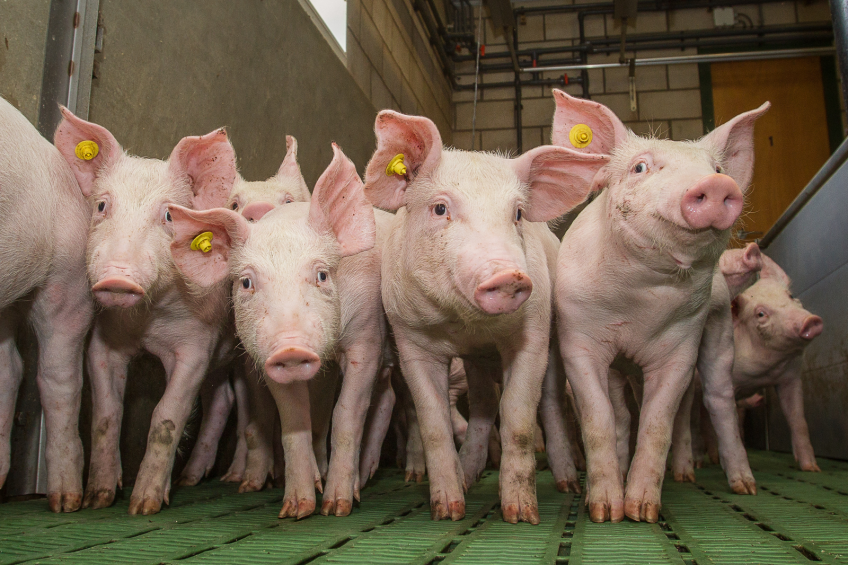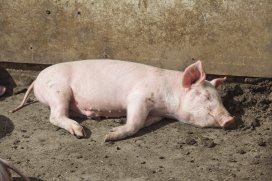How to boost piglet immune response with vitamin D

The benefits of vitamin D in pig feed go beyond the well-known function of calcium regulation and phosphorus homeostasis and its effect on bone development. Ongoing research ?continues to unveil more modes of action for pigs.
The post-weaning phase is a critical period in a piglet’s life. The development of a strong immune system at this early stage is key to securing its health and future optimum performance. However, a piglet has limited ability to mount and regulate an immune response when it is weaned from the sow at between three and five weeks old in commercial practice. Its immunity needs to develop as the passive protection from the sow’s antibodies fade away and viral, bacterial and parasitic infections are at their highest risk. Any compromise to a piglet at this period has repeatedly been shown to impact negatively on its later performance.
What is immunity?
In brief, immunology can be defined as the field of science that studies the different mechanisms by which animals discern between their own cells and foreign pathogens. There are two different immune systems; the innate immune system and the adaptive immune system. All animals are born with the innate system, in which protection is always present. It includes phagocytic (cells that eat other cells) macrophages and dendritic cells. In the adaptive system, protection arises by an immune response, including humoral immunity producing antibodies and cellular immunity producing white blood cells. It learns to recognise pathogens and has very powerful effector functions which can inactivate or destroy most micro-organisms.
During development of the immune system in embryogenesis, deficiencies of micronutrients (vitamins, fatty acids, minerals, trace elements) are more critical than macronutrients. This ‘organ’, with an extremely high cell turnover, needs a secure supply of nutrients (above all, proteins and vitamins) and when engaged in defense against a pathogen its nutrient demand is considerably increased. Studies are showing that optimising feed intake of vitamin D can boost piglet immunity in a number of different ways.
The changing face of vitamin D
Vitamin D is an essential nutrient which is routinely added to animal feed, primarily because animals’ blood levels of vitamin D vary considerably. It has become the focus of renewed attention by nutritionists and swine producers worldwide in recent years, because of findings that indicate that the benefits of vitamin D go beyond the archetypal function of the regulation of calcium and phosphorus homeostasis and its effect on bone development.
Vitamin D metabolites control the expression of more than 200 genes through activation of the vitamin D receptor, which regulates or modulates gene expression within the target cell. This gives the vitamin a role in many functions in swine, including immunity, muscle function and reproduction. The vitamin D receptor is not only found in the intestinal enterocyte, the osteoblast, and the renal cells, but it is also found in a wide range of cell types whose function does not relate to calcium metabolism, such as the intestine, pancreas, heart, eye, brain, thyroid, parathyroid, muscle, or immune cells.
Better understanding of the functions that vitamin D has in swine physiology allows producers to see the potential benefits it could have on productivity and profitability.

A conventional way to get a lot of vitamin D: sunbathing. [Photo: Jan Willem Schouten]
How does vitamin D work?
The predominant form of vitamin D in animals is called cholecalciferol (D3), which is absorbed in the lymphatic system. It then travels to the liver, where it is converted (hydroxylated) to 25-OH-D3 (calcifediol), the main circulating form of the vitamin. Once hydroxylated, the vitamin becomes more ‘water-friendly’ and circulates more easily in the blood system. However, the conversion from vitamin D to calcifediol cannot be regulated easily, especially by adding more vitamin D to the feed. This is because the liver acts as a ‘bottle-neck’ to vitamin D, controlling circulating levels of calcifediol.
Once calcifediol reaches the kidneys, it is further hydroxylated into a functional form of vitamin D, called 1,25-(OH)2-D3 (calcitriol), which is even more water-friendly. This compound, made from this highly-regulated step of vitamin metabolism, is actually a hormone that acts on intestinal cells to enhance calcium and phosphorus absorption for bone formation and other bodily functions. Without vitamin D, dietary calcium and phosphorus are poorly utilised. Studies show that immune cells and muscle cells also require vitamin D for optimal function.
Rovimix Hy-D (DSM), is a commercial form of calcifediol. It is absorbed more easily than pure vitamin D3 and it bypasses the liver and reaches the blood stream quickly and efficiently. Research reports have indicated that pigs supplemented with calcifediol have higher circulating levels of calcifediol in plasma leading to better overall calcium homeostasis, increased muscle development, and enhanced immune response compared to pigs fed with vitamin D3.

Improved piglet immunity
The newborn piglet is exposed to a vast array of antigens from the moment it is born. It relies on maternally-derived immunity for protection, until it develops its own active immunity. Prior to weaning, sow’s milk provides most of the nutrients that the piglet will receive for maximal growth and health. However, sow’s milk provides little vitamin D. Supplementing sows with vitamin D before birth could provide a nutritional strategy to increase vitamin D status of the piglet, through placental transport or via sow’s milk.
Recently, a study showed a higher level of calcifediol in sow milk with a commercial calcifediol maternal diet compared to a standard vitamin D3 maternal diet, leading to a higher concentration of vitamin D in the blood of the piglets and allowing them be better equipped to face the critical weaning period.
After weaning, the circulating humoral antibodies persist and continue to provide effective protection against invasion of the pig’s body. However at weaning, milk, the source of mucosal-associated antibodies is suddenly cut off. The antibodies that are present in the mucous decline within a day or so.
In 2012, researcher Jeffrey D. Konowalchuk, of the University of Alberta, Canada, carried out a study which ‘looked to support previous observations regarding the positive immunomodulatory role of vitamin D and indicates that commercial calcifediol is a superior dietary supplement for weanling piglets. After two weeks of nutritional supplementation, it was found that the diet with commercial calcifediol led to the greatest increase in the concentration of serum 25(OH)D3, compared to control and vitamin D3-supplemented diets. An average of 40.4 ng/ml of 25(OH)D3 was found in the serum of animals supplemented with the additive, compared to 11.2 (vitamin D3 group) and 7.87 ng/ml (control diet group). In practical swine production, a plasma concentration below 10 to 15 ng 25(OH)D3/ml, is normally considered as deficient.
White blood cell numbers
Systemic blood and peripheral bronchoalveolar mucosal compartments known to serve as portals for the infiltration of pathogens into the animal host were thus affected. This resulted in an increase of white blood cell numbers, upregulation of their survival capacity and an increase in the phagocytic antimicrobial capacity of discrete cell populations.
A rise in white blood cells can have a positive impact in the capacity of animals to mount effective immune responses against incoming pathogens. Upregulation of immune competence status was therefore evident two weeks after initiation of diet supplementation in weaned pigs and was correlated with a parallel increase in serum levels of 25(OH)D3 in response to supplementation with commercial calcifediol.
Experimental study
The positive regulation of piglet immune response with the same calcifediol additive was confirmed in another experimental study carried out in France’s western region, where its impact on humoral immune parameters was measured. As shown in the graph, the diet containing the additive did not only significantly impact the 25(OH)D3 plasma concentration but also the immunoglobulins G (major component of humoral immunity) blood levels.
The immune system is a double-edged sword, as pathogen elimination is important, but the immune response costs energy. It was therefore interesting to observe in this experiment that a higher stimulation of the immune system did not negatively impact piglet zootechnical performance with both piglet groups (additive and vitamin D3), having similar feed conversion ratio and average daily weight gain. The results showed that efficient immune response is critical and vitamin D is critical to this.
Future performance
Today, specialised nutritional supplements of sows and progeny play a vital role in piglet health. This is extremely important for swine producers to ensure future performance and productivity of their animals. These new studies provide important support for the significant immunomodulatory impact that vitamin D3-derived nutritional regimes have on swine at weaning. These results should contribute to the development of improved strategies for the management of weanling pigs in commercial environments, where they are known to be particularly susceptible to disease.
References available upon request.
By: Antoine Meuter, DSM











